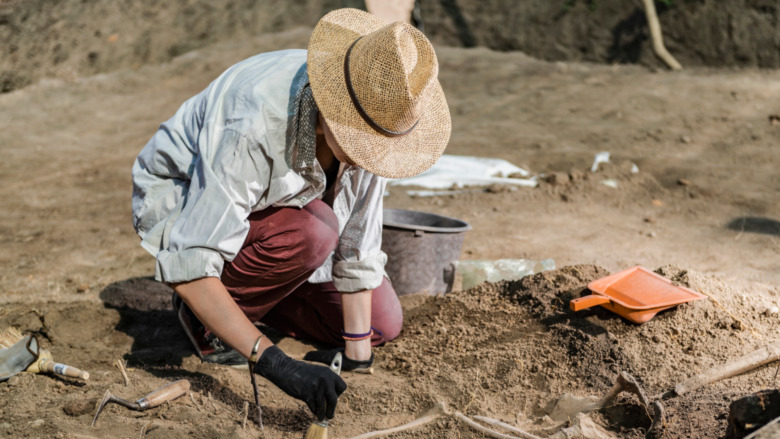What Are The Mummies Of Guanajuato?
The mummies of Guanajuato are a group of 111 mummified human corpses, many of whom died during a cholera outbreak in the Mexican town in 1833, according to Vintage News. As those people lay sick and dying, it's likely they never imagined their dried, twisted corpses would be a tourist attraction nearly 200 years later.
The mummies were discovered after they were disinterred starting in 1865, according to Radical Death Studies, due to a law that was passed in Guanajuato requiring relatives of the diseased to pay a cemetery tax in order for their family member to remain buried in the town graveyard. According to Vintage News, the vast majority of families did not pay the tax, and bodies were continually exhumed over the years. Not all were naturally mummified, but those that were got stored in an ossuary — a room for the bones of the dead — underneath the cemetery grounds, giving the families a chance to pay up and have their loved one re-buried, per Atlas Obscura.
Around the end of the 19th century the disinterred mummified bodies accumulated, with their contorted faces and mouths agape, and the curiosity of tourists and locals meant there was an opportunity to make money by letting people pay to see the way the dry burial conditions had naturally mummified the men, women, and children of Guanajuato. In 1969 the mummies were officially on display at The Museum of the Mummies at Guanajuato.
The mummies include a fetus and a pregnant woman
In 2007 a group of forensic and anthropologic experts began the the first scientific study of the mummies since their discovery. During their research, they found something they did not expect. According to All That's Interesting, the researchers found evidence of embalming in a newborn and in a fetus, whom they estimated to be 24 weeks along, making it the "world's youngest processed (partially embalmed) mummified fetus." Both the infant and the fetus' internal organs had been surgically removed and the resulting cavities stuffed with a cotton-string material, then stitched closed. The brain of the fetus had also been removed and packed with the material.
Dr. Jerry Melbye, a forensic anthropologists and a professor at Texas State University-San Marcos told the university, "We had no idea that embalming had been going on. At first, I wondered whether this was a purposeful step in mummification, like the process in Egypt that calls for removal of the internal organs to prevent decomposition. We have no evidence in Guanajuato of such a practice, so one wonders why both the fetus and the baby had been embalmed." He said he suspected it was to preserve the bodies longer for viewing prior to burial, because infants decompose faster than adults.
Another remaining mystery is whether the mummified remains of a pregnant woman at Guanajuato whose placenta still extrudes from her body was the mother of the infant or the fetus. She is believed to have died in childbirth or due to a miscarriage.

